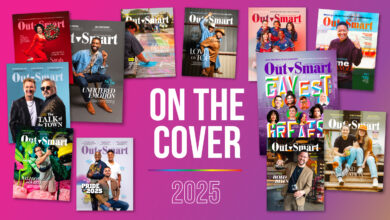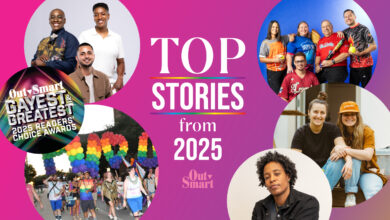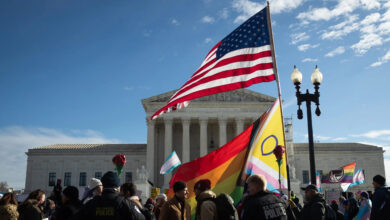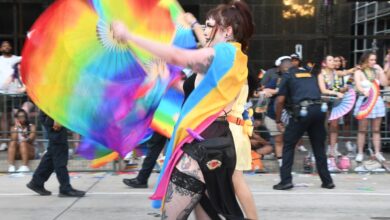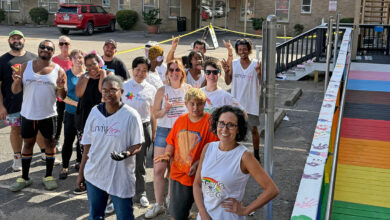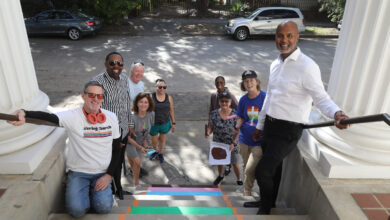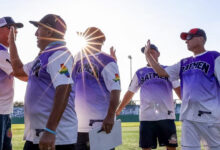
Building a More Equitable Gayborhood
Queer urban designer Katie Coyne wants to strengthen Montrose.

With the face of Montrose quickly changing, the Montrose Tax Increment Reinvestment Zone (TIRZ) Board is focused on improving the neighborhood without losing sight of its long LGBTQ history. Katie Coyne, 34, is a queer, self-identified butch woman playing a key role in reimagining and revitalizing Houston’s gayborhood. She and her team from Asakura Robinson lead the Montrose Livable Centers Plan that is funded through the TIRZ via the Houston-Galveston Area Council’s Livable Centers Program, a program aiming to create more walkable, accessible, and connected communities.
The Montrose TIRZ was created in 2015 by the Houston City Council to create and extend capital-improvement projects for the purpose of attracting the private investment necessary to revitalize communities within the Zone. In early 2020, the Montrose Livable Centers Plan was launched to create “recommendations for new capital projects that the TIRZ will lead on, in addition to complementary programs and new policies,” Coyne says.
A TIRZ takes a portion of the property taxes collected within its boundaries and allows them to be reinvested into capital projects that benefit the neighborhood, under the authorization of a board that is selected by the mayor. The Montrose board, in its efforts to leverage those tax dollars to improve the area, hired the planning, urban design, and landscape-architecture firm Asakura Robinson to develop a plan and a vision for new developments throughout Montrose for the next several years. Coyne, a principal at the firm, heads up the ambitious neighborhood project with support from subconsultants Walter P. Moore, UP Art Studio, and LGBTQ+ planning expert Dr. Petra Doan.

“Me being the lead on the project was intentional,” Coyne says. “This project is much more holistic than other projects. We wanted to make sure we cultivated a diverse team that included individuals from the LGBTQ community.”
Other sub-consultants identify as LGBTQ as well. The influence that LGBTQ representation has had on the project is apparent in the Plan materials. The LGBTQ history of the neighborhood, as well as its current racial and social inequalities, are addressed at length in the Plan.
The Montrose Livable Centers Plan, which wrapped up in February and hosted its public plan launch early in March, focuses on three primary goals: Connected, Inclusive, and Thriving. Learn more about these goals below:
Connected
According to the Plan, one of Montrose’s unique strengths compared to other Houston neighborhoods is its traditional street grid and its well-defined routes for biking, walking, and transit. The Plan wants to improve on those strengths. As part of improving connection, the Plan wants to create a disbursed but connected network of urban green space that will mitigate the summer heat, improve inhabitability and stormwater runoff, and fill in the gaps in park land and open spaces. These greenways will also allow better bicycle connections between major green nodes, with the key priority projects located along Montrose Boulevard from Buffalo Bayou to Hermann Park.
“We looked at how we could build on past work to improve mobility. This includes improving streetscapes, pedestrian and bicycling access, more green space, pocket parks, and right-of-way. It also includes a Montrose Urban Greenway System,” Coyne says.

Inclusive
“Being inclusive means focusing on affordable housing and assessing who has access to live in Montrose. We were cognizant of the history of the neighborhood as an inclusive space for counterculture and its role as ‘the gayborhood.’ The growth of the neighborhood has led to displacement for many of its residents. Ninety percent of the people who live in Montrose leave the neighborhood to go to work, and 90 percent of the people who work in the neighborhood don’t live there,” Coyne explains.
One of the goals outlined in the plan is to create affordable-housing funding and programs that will go toward improving the ability of longtime residents to remain in Montrose, providing more housing for service workers in the neighborhood, and removing barriers to home ownership. It also contemplates a “right to return” program focused on giving priority for affordable housing to individuals and families who were previously displaced by rapidly increasing housing costs.
Acknowledgment of harm is another key component of the Plan. Racial covenants that depressed homeownership among communities of color still exist in many Montrose neighborhoods. Although they are no longer enforceable under the law, they still exist in many instances and continue to serve as a reminder of the systemic racism that was once in place. The plan wants to work with neighborhood associations in the near term to include statements that acknowledge the harm these covenants caused, and ultimately to have them removed through legislative action at the state level.

Thriving
“What makes Montrose thrive is the vibe that drives the local economy. We want to preserve and protect this by promoting small, local business and beloved institutions. We want to use public art, creative placemaking and active programming to reflect Montrose’s identity as an inclusive place,” Coyne says.
There are several programs that will help support the goal of a thriving Montrose. A “Montrose Stories” public-art program will engage in telling the story of the neighborhood. This will evolve into a tourism program that will engage visitors with guided tours of significant places, public art, and historic sites. The plan also would have Montrose designated as an LGBTQ Cultural District by the Texas Art Commission, which may result in further grant funding for art projects that honor the LGBTQ community.
While a Montrose Remembrance Garden for LGBTQ victims of violence has been created, the plan would also support the development of a memorial specifically to honor community members who are victims of the HIV/AIDS crisis.
When completed, the Plan will have a transformative effect on the neighborhood that forms the heart of Houston’s LGBTQ community. The Livable Centers Program Call for future study locations is also open till May 27, and eligible entities are encouraged to attend the April 15 pre-submittal meeting to learn more.
For more information on the Montrose Livable Centers Plan, visit montrosehtx.org.
This article appears in the April 2021 edition of OutSmart magazine.


